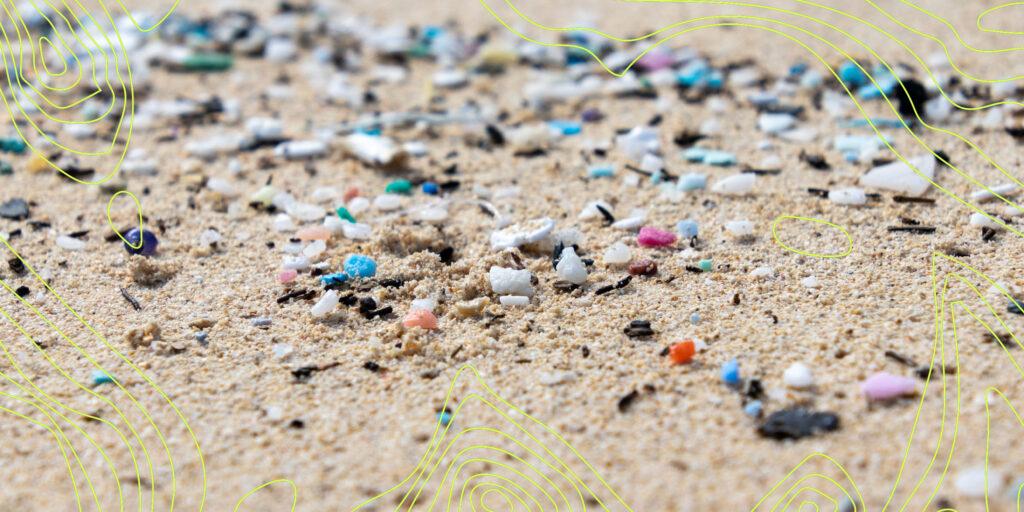By Sara Tallarovic
Pro tip: For students who are learning remotely, a coffee filter can be used to strain large pieces of microplastics from a sample that can then be identified with a hand lens or a smartphone with a clip-on macro lens.
Plastics in the environment are prominent in the news lately. As plastic waste finds its way into the environment, it seemingly turns up everywhere—from the deepest ocean trench to high mountain tops, and even in the digestive tracts of seabirds and marine mammals. Categorized by size, microplastics are pieces of plastic waste that are smaller than 0.5 cm in size. In contrast, mesoplastics are between 0.5 cm and 10 cm, and macroplastics are the largest at over 10 cm in size. Microplastics are currently in the spotlight, mainly because of their widespread distribution and potential impact on marine ecosystems, including fish nurseries. They’ve even been found in human digestive tracts.
If you live or teach near a coastline, it is easy to investigate this phenomenon with your students using our digital microscopes, such as the USB Digital Microscope and the 5 Megapixel Celestron Digital Imager. A colleague and I recently traveled to Otter Rock, on the coast of Oregon, to collect samples of beach sand at the high tide line where many small pieces of plastic waste were visible. We tried two methods of collection and separation. First, we used a trowel to scoop up sand onto a piece of metal screen. We sifted the samples while still on the beach and transferred the remaining pieces into a container for transport back to the lab. This method is great for separating out mesoplastics and larger microplastic particles for quick sample collection, but be aware that you will not capture many of the smaller microplastics.
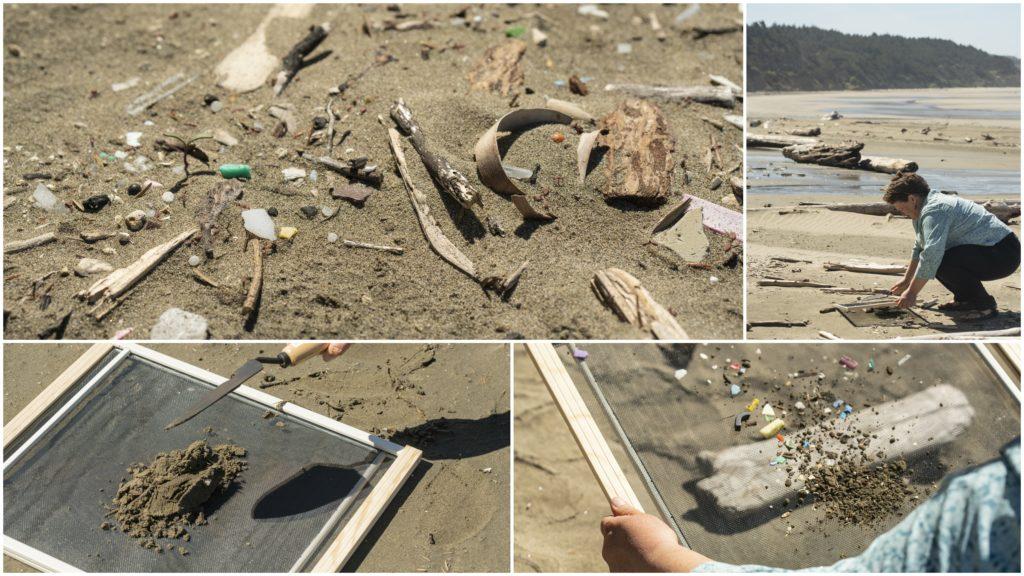
We viewed and imaged our samples under a USB Digital Microscope.
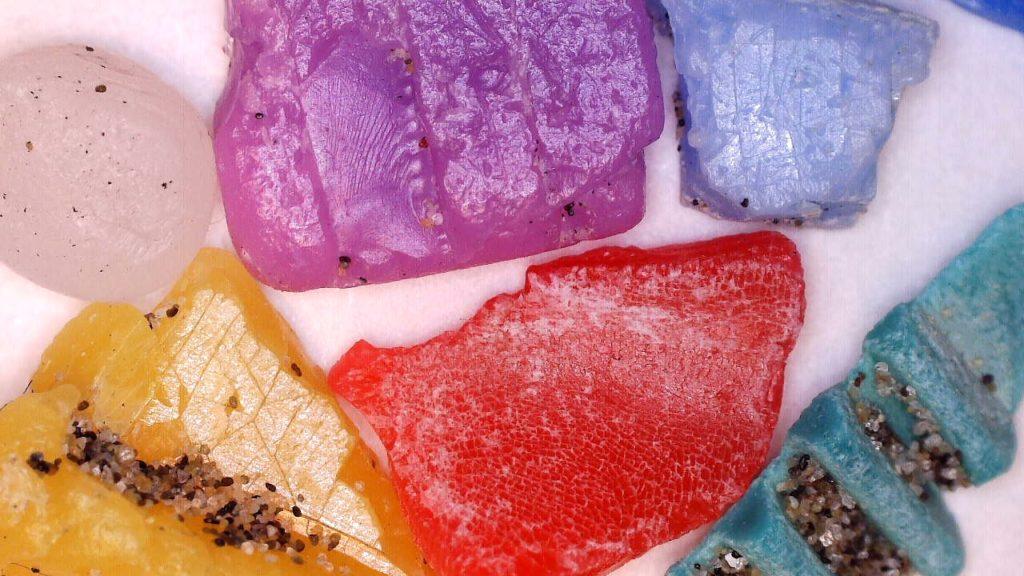
The second sample collection and separation method is more labor-intensive, but also more thorough. We were inspired to try this method by Chemeketa Community College instructors Jennifer Johns and Reanna Camp, who developed a hands-on laboratory activity to use with their Marine Environmental Systems course. We collected our samples with a trowel, stored them in a container for transport back to the lab, and allowed them to air dry. We added dried samples to a jar containing a hypersaline solution (1.5 g cm−3 NaCl in distilled water), which causes most plastics to float (whereas sand sinks). After decanting off floating materials, we used a hand-operated pump as a vacuum filter. Our filtered samples dried on the filter paper, and we examined them using a USB Digital Microscope. This method captures considerably more microplastic particles, including small plastic fibers, but also captures more sand.
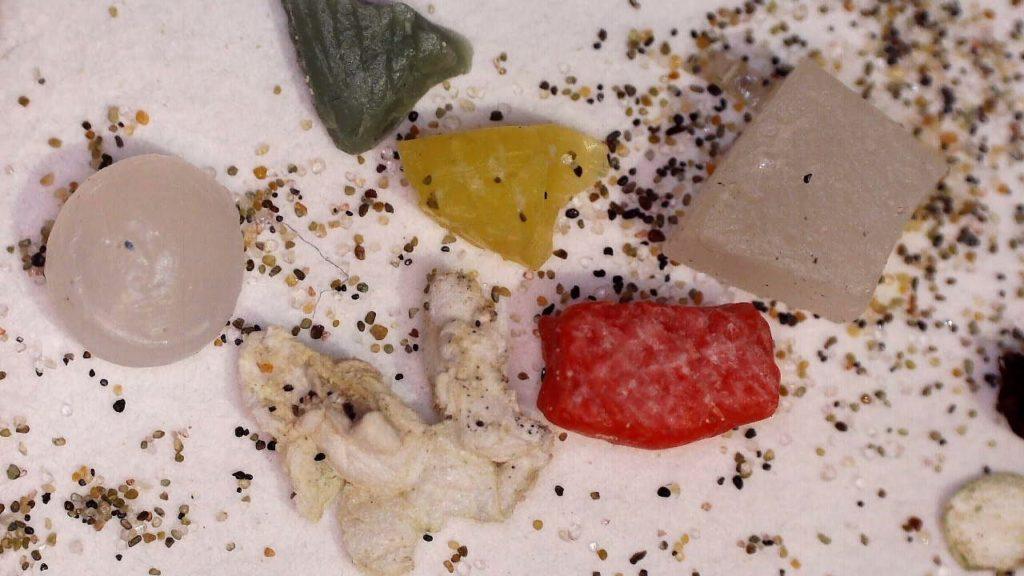
For some of the particularly small microplastic fibers in our samples, we used a dissecting microscope and a 5 Megapixel Celestron Digital Microscope Imager.
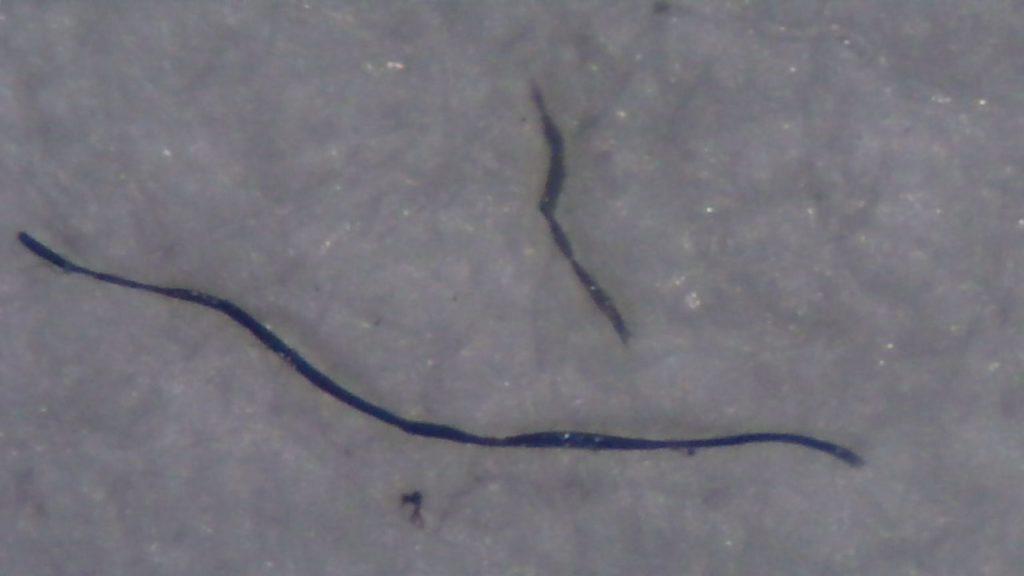
Our samples from the beach revealed both primary microplastics (i.e., small pieces of plastic released directly into the environment) and secondary microplastics (i.e., particles that result from the breakdown of larger pieces). Depending on your time and resources, either collection method can be an effective way of finding plastics to examine with your students.

